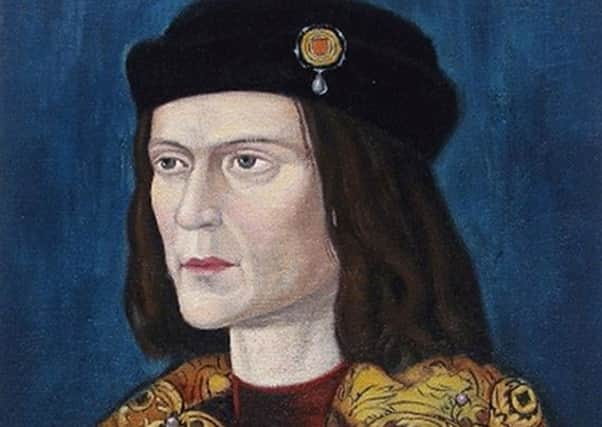Global interest as Richard III is finally reburied


Onlookers across the globe were captivated by the story of the king, who had lain forgotten in such a mundane spot, poles apart from the final resting place of other monarchs.
And next week, 530 years after he was killed at the Battle of Bosworth, the story will come full circle and he will be buried at Leicester Cathedral.
Advertisement
Hide AdAdvertisement
Hide AdOn Thursday the first ceremonial burial of a monarch will take place since the 1950s. Media organisations from around the world have already applied to cover the events, which will be broadcast on Channel 4, while invited guests include the Countess of Wessex.
Events will also be held in York, where many believe he should have been buried, celebrating his Yorkshire links.
Alison Bodley, senior curator of history and archaeology at The Yorkshire Museum said: “King Richard III’s reign only lasted three years but he has probably received more attention than any other British monarch.
“A number of accounts written after Richard’s death portrayed him as a tyrannical murderer. Yet for many, especially in Yorkshire, the image of a fair, benevolent figure, much maligned, endures.”
Advertisement
Hide AdAdvertisement
Hide AdThe museum, in York, is hosting an exhibition, opening the day after the king’s reinterment, exploring the myths which have shaped modern views of him.
However, Dr John Ashdown-Hill, leader of genealogical research and historical adviser on the Looking for Richard project, which led the search for the king’s lost grave, told the Yorkshire Post: “Since he was killed by a mortal enemy, Richard III has always been a controversial figure.
“As a result he is perceived as intriguing and fascinating. But the outcome of the wide public interest is not always positive.
“The Looking For Richard Project always had two aims – to find the king’s lost mortal remains, and to get at the truth about him. But sadly the second aim has not really succeeded, because since the discovery of his bones, the traditional mythology about Richard III continues to be circulated – and even some new mythology has been invented!”
Advertisement
Hide AdAdvertisement
Hide AdSince the team discovered the monarch in 2012 there has been a continuing row about where his final resting place should be.
A failed High Court bid was launched to have him buried in York, while others claimed Westminster Abbey was a more fitting final resting place.
In the end Leicester won out, but there will be some nod to his Yorkshire roots during the upcoming ceremonies. The king’s coffin will be enclosed in a monumental block of Swaledale stone.
Several days of celebrations are planned, starting tomorrow when Richard III’s funeral cortege will travel a route designed to echo his final days, before arriving at Leicester Cathedral where it will lie in state for three days.
Advertisement
Hide AdAdvertisement
Hide AdOn Thursday a reinterment service will be held at the Cathedral. Soil from the village where Richard III was born will be placed alongside his remains.
The last Plantagenet king was born at Fotheringhay Castle, Northamptonshire, and members of his family were buried at the local parish church. Soil from the castle and two other sites will be laid by Archbishop of Canterbury Justin Welby
At York Minster, where campaigners argued he had planned to be buried, a Choral Evensong will be held at 5.15pm, before a procession from the Minster’s South Door at 6.20pm, along Stonegate to St Helen’s Square and ending up at the Mansion House. The service of Choral Evensong will include a prayer composed by the Dean of Leicester.
One of England’s most infamous monarchs, Richard III had close connections to York and Yorkshire, having spent much of his youth living at Middleham Castle.
Advertisement
Hide AdAdvertisement
Hide AdRichard courted the goodwill of both the council and the Minster clergy. On the day of his coronation, the mayor and alderman rode to Middleham to present wine and food to Richard’s son Edward.
Richard’s son Edward was crowned Price of Wales at the Archbishop’s Palace behind the Minster. York looked to Richard to help it at a time of economic decline, and actively championed his short reign. The city sent troops to support his cause.